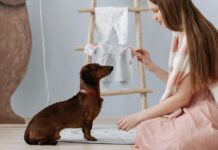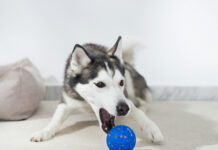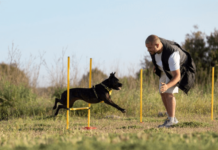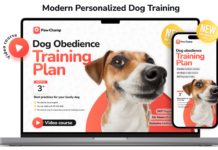Last Updated on December 15, 2023 by Dogs Vets
Expert Tips On How To Train Your New Puppy
Bringing a puppy home is a thrilling experience! All that sweetness and snuggles are unbeatable.
Another advantage of puppies is that they are too young to have developed many undesirable habits—they are essentially a blank slate. But it is also your responsibility to educate your little fur ball on all he needs to know about becoming a member of your family.

To set yourself up for success, start training before getting a puppy. Make sure you have everything you’ll need for a new puppy and that your home has been puppy-proofed.
Plan ahead of time where you want your puppy to sleep, play, and relieve himself. Consider which parts of the house will be off-limits.
Positive reinforcement training is the most effective way to teach your puppy what is good and wrong. It is centered on rewarding your puppy for a job well done with high-value dog treats. This will educate your dog that when they listen to their humans, pleasant things happen.
Start training from the first day
It’s easy to laugh and enjoy the adorable things that puppies do. However, this could be an issue. When your pup is fully grown, the same adorable things, such as leaping up on people to receive attention, become annoying.
Every minute, with every encounter, one of you is being trained. Make sure it’s the dog, not you. Don’t promote poor behavior now, and you won’t have to worry about it later.
Keep an eye on the puppy
Allowing your puppy to roam about unsupervised is a recipe for disaster (think potty accidents and chewed-up items). When you are unable to actively monitor your dog, limit them to a small space or tie him to you with a leash or a longer house line.
Feed the puppy in a crate
Provide meals in the kennel to help your puppy connect nice things with it. Close the crate door once your puppy has begun eating. But as soon as he’s finished, open the door to let your dog out.
As your puppy grows accustomed to his crate, gradually increase the amount of time he spends inside before opening the gate. To avoid frightening your puppy, start crate training in baby steps.
Place the crate near you
Keep your puppy near to you overnight to aid with first-night anxieties. Place your puppy’s crate on top of a solid table or chair, at the same height as your bed (but not in it).
You can go even closer by poking your fingers through the crate door. If your puppy howls at night, take him outside to relieve himself and then quickly return him to his kennel. Gradually move the crate away from the bed, onto the floor, and then into the room where your dog will sleep.
Make their bedtime comfy
Your puppy may experience anxiety during the first few nights in a new environment. In your puppy’s kennel, place a cuddly animal meant to provide comfort.
Some even have a heartbeat and can be warmed up to give your pooch the illusion that he is still sleeping with the company.
Have a schedule
The secret to quick toilet training is to have your dog on a routine. Most pups need to relieve themselves after eating, napping, or playing. Take your dog out to pee first thing in the morning.
If your puppy has relieved himself, he is entitled to 30 to 45 minutes of playing. After that, it’s time to return to the box and relax. Many puppies may tire out before this time is over, so playtime may only need to last 10 to 20 minutes, depending on your puppy’s activity level.
If your puppy falls asleep in his kennel, you can leave him inside for a longer period. If your puppy is awake, take him out of the crate after 15 minutes to allow him to go pee.
If he doesn’t go, you return him to the kennel for another 15 minutes before trying again. Playtime resumes once he has relieved himself. The order is a bathroom break, playing, then kennel.
Learn the puppy’s potty cues
When you take your dog outdoors to go pee, pay close attention to his body language. What does he do while he gets ready to conduct his business? Those are the same characteristics that your puppy will exhibit in the house.
For some dogs they start walking in circles to show they need to go, so keep an eye out for these behaviors.
Make a potty corner
Set up a spot for your puppy to hang out if you have to leave the house for an extended period. Use a fenced room or a playpen area. Place the crate with your puppy’s bed and a potty mat in the area.
Use Vitakraft treats as rewards
Stock up on Vitakraft because you’ll need a lot of them throughout training. But what happens once your dog has mastered his skills? You must change the word “bribe” to “reward.”
A few Vitakraft treats for dogs include the Meaty Morsels Treats for Dogs and Treaties Smoked Chicken Recipe Treats for Dogs that your pup will enjoy.
Hide the rewards after your small canine knows the desired behavior. Always compliment your dog on a job well done, but also sometimes reward it with treats. The less you need the goodies, the more a behavior becomes a habit.
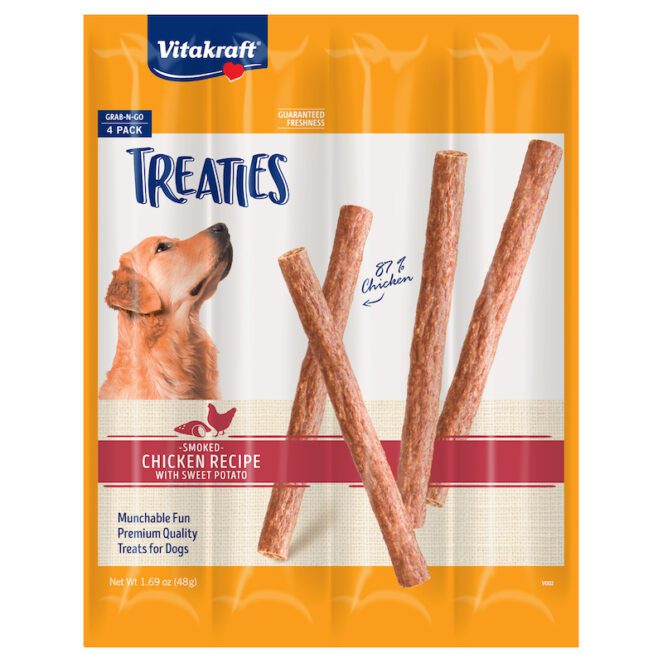
Vitakraft has grown from a modest farm merchant to an international pet food company. Over 180 years ago, a small pet food business in the town of Heiligenrode near Bremen, Germany, grew into one of the most successful firms in the pet care sector.
Our firm concept and actions have always been governed by one core principle: “For the love of pets.”
Every day, almost 2,000 people worldwide manufacture and sell over 1.2 million high-quality Vitakraft products.
Vitakraft has been committed to the well-being of all animals since 1837, with the top priority of delivering high-quality goods that ensure all animals receive the right diet – just as in the wild.
Facts Check
We hope you enjoyed this article… What are your thoughts?
Please feel free to share this article!
We strive to provide the latest valuable information for pet lovers with accuracy and fairness. If you would like to add to this post or advertise with us, don’t hesitate reach us.

